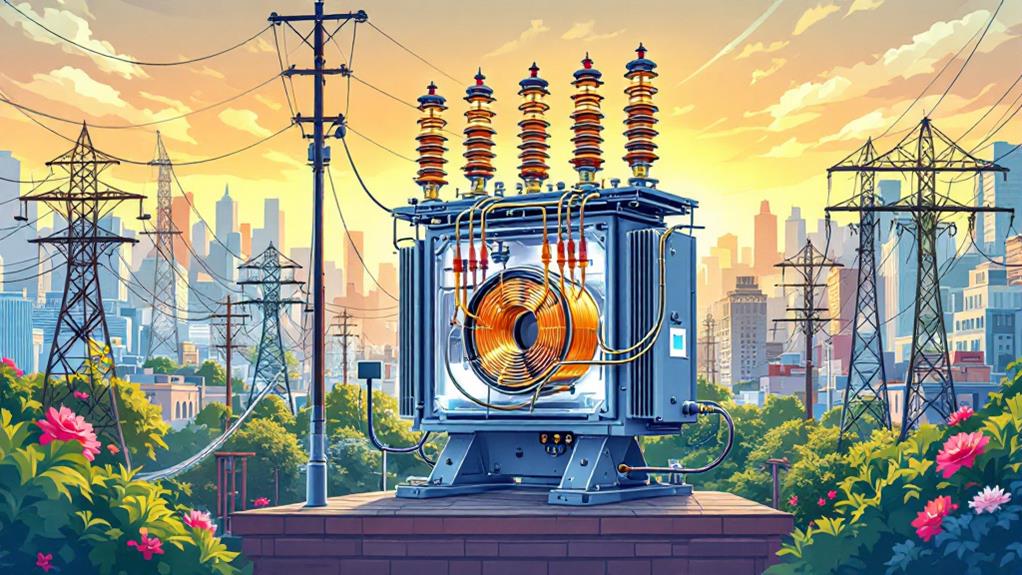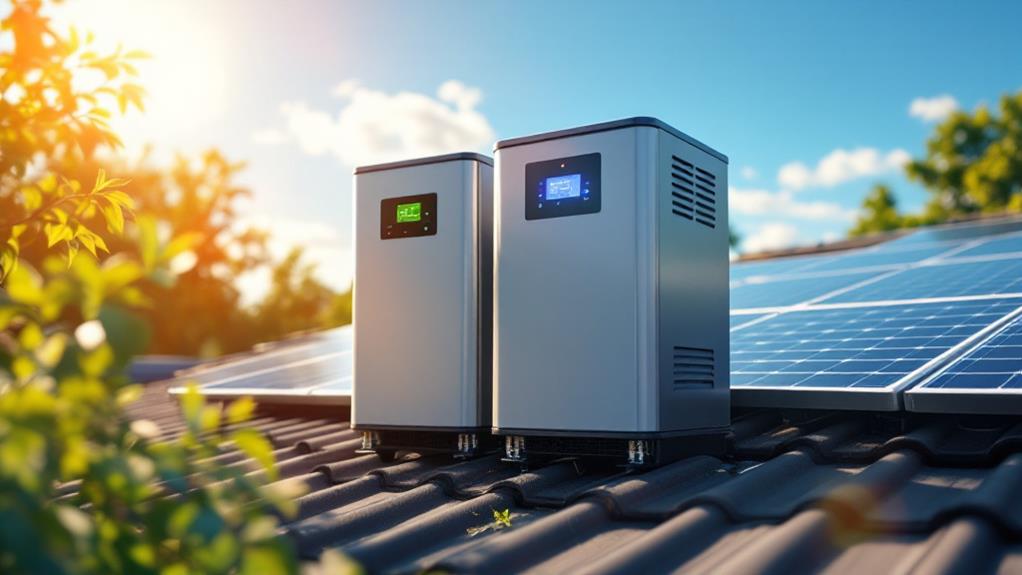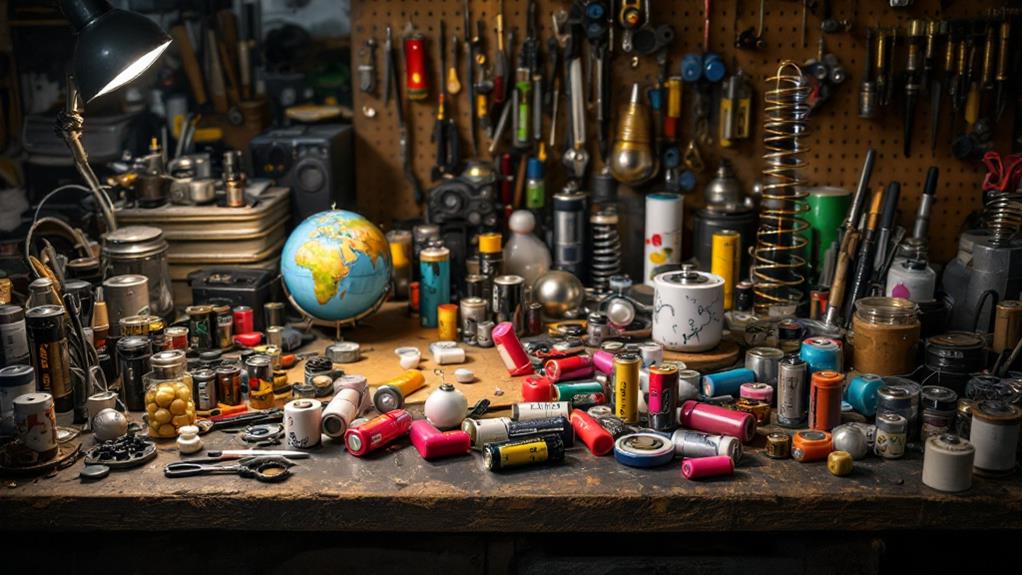How to Choose the Perfect Shed for Your Portable Generator: A Buyer’s Guide
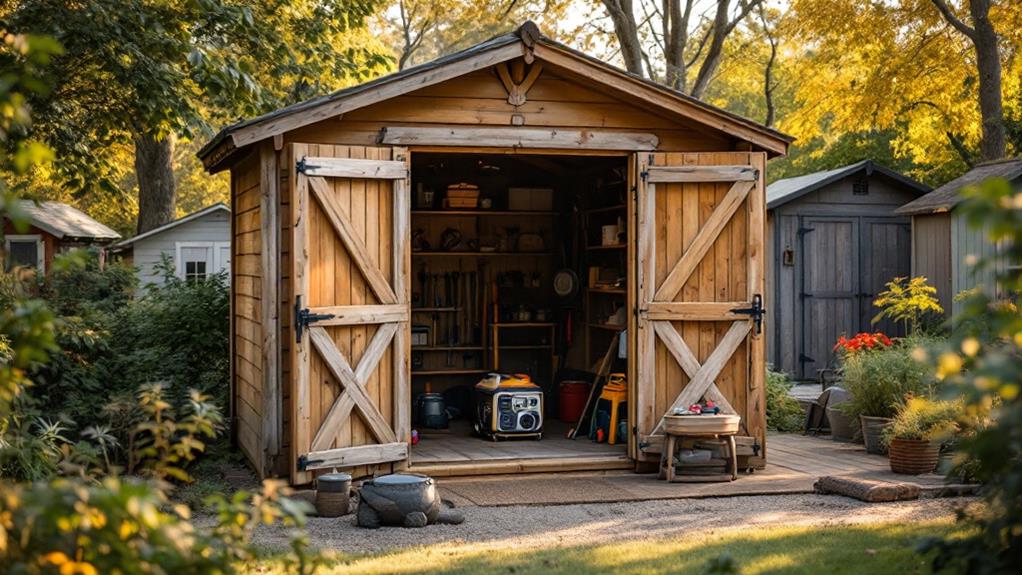
When choosing a shed for your portable generator, consider size, material, ventilation, weather resistance, accessibility, and long-term value. Measure your generator and allow extra space for ventilation and access. Select durable materials like treated wood, galvanized metal, or UV-resistant plastic. Guarantee proper ventilation with vents, louvers, or fans for safety. Opt for weather-resistant features such as sloped roofs and reinforced corners. Look for wide doors or removable panels for easy generator access. Don't forget to factor in your budget while prioritizing quality construction. By carefully appraising these factors, you'll be well-equipped to make the best choice for your generator's protection and performance.
Size and Capacity Considerations
When it comes to size and capacity considerations, you'll need to start by measuring your portable generator. Take note of its length, width, and height, then add at least 2-3 feet on each side for proper ventilation and easy access. This extra space is indispensable for safe operation and maintenance.
Consider the generator's fuel type and capacity. If you're using a propane tank, make sure there's enough room to store it safely. For gasoline-powered generators, factor in space for fuel cans and a spill containment system.
Don't forget about layout options. You'll want enough room to maneuver around the generator, so think about door placement and interior configuration. Some sheds offer customizable shelving or workbenches, which can be useful for storing tools and supplies.
While functionality is paramount, don't overlook aesthetic appeal. Choose a shed that complements your property's style. Many manufacturers offer various colors and finishes to match your home's exterior.
Lastly, consider future needs. If you might upgrade to a larger generator or add more equipment, opt for a slightly bigger shed to accommodate potential growth.
Material Selection
Material selection plays a crucial role in the longevity and effectiveness of your generator shed. When choosing the right material for your shed, consider factors such as durability, weather resistance, and maintenance requirements. Metal sheds offer excellent durability and fire resistance but may be prone to rust in humid environments. Wood sheds provide a classic look and good insulation but require regular maintenance to prevent rot and pest infestations. Plastic or resin sheds are lightweight, affordable, and low-maintenance, but may not be as sturdy as metal or wood options.
To guarantee material quality and durability, look for:
- Treated or naturally rot-resistant wood for wooden sheds
- Galvanized or powder-coated metal for rust prevention
- UV-resistant plastic or resin for prolonged outdoor exposure
- Reinforced corners and joints for added structural integrity
Consider your local climate when selecting materials. In areas with extreme temperatures or frequent storms, opt for materials that can withstand these conditions. Additionally, think about the aesthetic appeal of the shed and how it will complement your property. By carefully evaluating these factors, you'll be able to choose a generator shed material that offers the perfect balance of functionality, durability, and visual appeal.
Ventilation and Safety Features
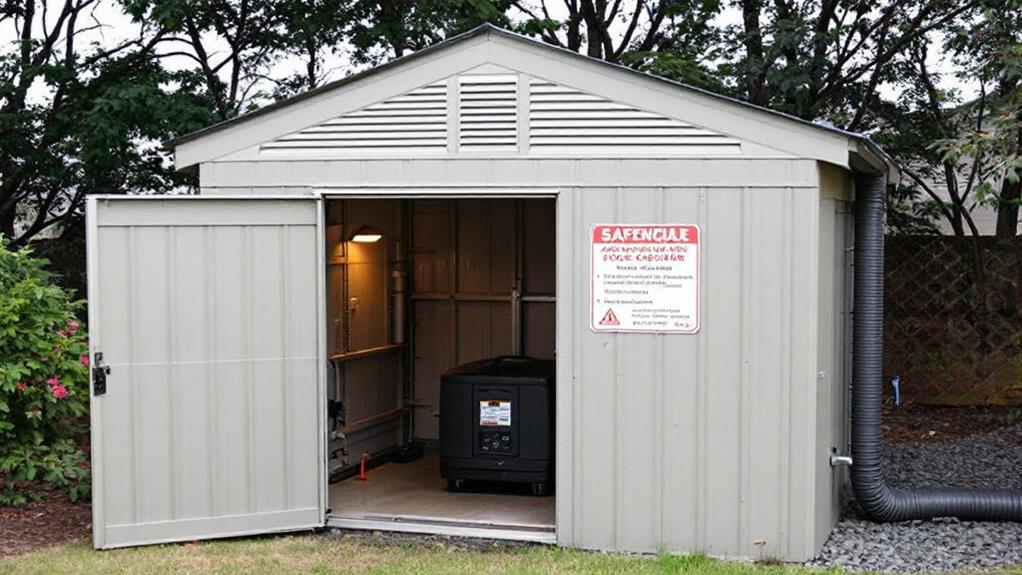
Proper ventilation and safety features are essential components of any generator shed. When selecting a shed for your portable generator, prioritize designs that promote adequate air circulation. Look for vents or louvers on the walls and roof to allow exhaust fumes to escape and prevent overheating. Some sheds come with built-in exhaust fans, which can further enhance airflow and reduce the risk of carbon monoxide buildup.
Consider sheds with fire-resistant materials or coatings to address fire hazard mitigation. Look for features like flame-retardant walls and roofing materials. Guarantee the shed has proper electrical wiring and outlets designed specifically for generator use. Install carbon monoxide detectors inside the shed and nearby living spaces for added safety.
Choose a shed with wide, easy-to-open doors for quick access during emergencies. Look for models with sturdy locks to prevent unauthorized access and potential accidents. If possible, opt for a shed with a built-in fuel storage compartment that's separate from the main generator area. This separation helps contain potential fuel spills and reduces fire risks. Finally, ensure the shed has adequate lighting for safe operation and maintenance, especially during nighttime power outages.
Weather Resistance
A generator shed must withstand various weather conditions to protect your precious equipment. When choosing a shed, consider its weather resistance capabilities and the impact on durability. Look for materials that can endure harsh elements like rain, snow, and intense sunlight without deteriorating quickly.
Opt for sheds made from weather-resistant materials such as treated wood, metal, or high-quality plastic. These materials offer better protection against moisture and UV rays, ensuring your generator remains dry and safe. Pay attention to the roof design, as it plays a vital role in preventing water infiltration. A sloped or gabled roof will efficiently channel rainwater away from the shed.
Consider the shed's insulation properties to maintain a stable internal temperature. This helps prevent condensation and protects your generator from extreme temperature fluctuations. Look for features like:
- Double-walled construction
- Weather stripping around doors and windows
- Reinforced corners and joints
- Rust-resistant hardware
Don't forget to check for proper sealing around openings and vents to prevent water ingress. A weather-resistant shed will not only protect your generator but also extend its lifespan, ensuring it's ready for use when you need it most.
Accessibility and Portability
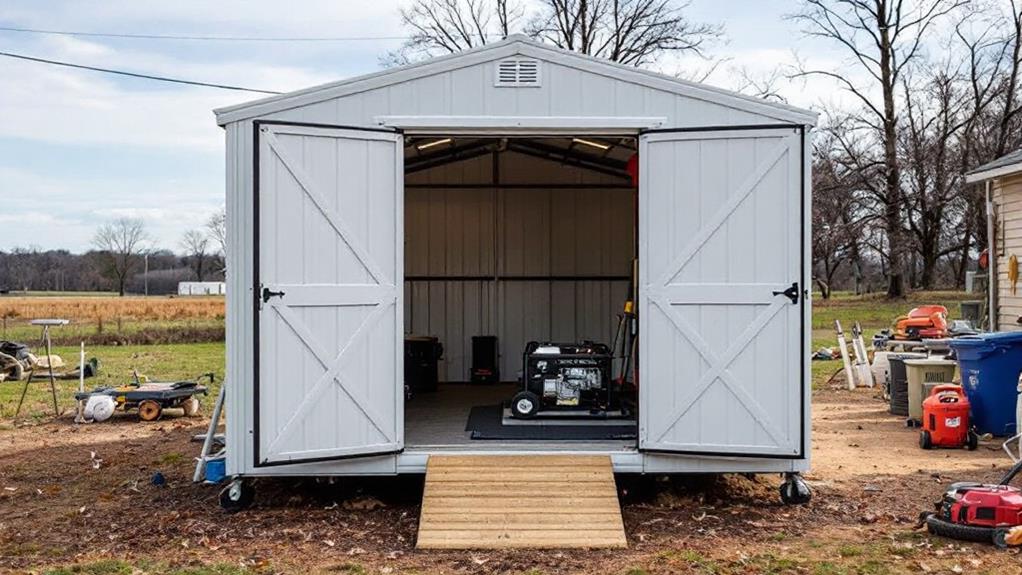
While weather resistance protects your generator, it's equally important to contemplate how you'll access and move the equipment when needed. Consider sheds with wide, double doors or a removable front panel for easy generator access. Look for designs that allow you to roll the generator in and out smoothly, without obstacles or tight turns.
For ease of transport, opt for a shed with a sturdy ramp or low threshold. This feature will make it more straightforward to move your generator, especially if it's heavy or mounted on wheels. Some sheds come with built-in handles or lifting points, facilitating relocation if necessary.
Convenient setup is vital for both the shed and your generator. Choose a model that's quick to assemble and doesn't require complex tools or specialized knowledge. Ensure there's ample space inside for your generator and any additional equipment or fuel storage. Consider the shed's placement in your yard, keeping it close enough for easy access but far enough from living areas for safety.
Budget and Long-Term Value
When considering a shed for your portable generator, it is critical to balance initial costs with long-term value. While it might be tempting to opt for the cheapest option, investing in a higher-quality shed can save you money in the long run. Consider the durability of materials, weather resistance, and maintenance requirements when evaluating your options.
Look for sheds that offer:
- Sturdy construction that can withstand harsh weather conditions
- Rust-resistant hardware and fittings
- Easy-to-clean surfaces to minimize maintenance
- Customizable features for future upgrades
Don't forget to factor in potential financing options if you're considering a more expensive shed. Many retailers offer payment plans or credit options that can make a higher-quality shed more affordable upfront.
Remember that a well-built shed can protect your generator from theft, weather damage, and premature wear, extending its lifespan and reducing repair costs. By choosing a shed that meets your current needs and allows for future expansion, you'll guarantee that your investment continues to provide value for years to come. Ultimately, the right balance of budget and long-term value will depend on your specific needs and financial situation.
